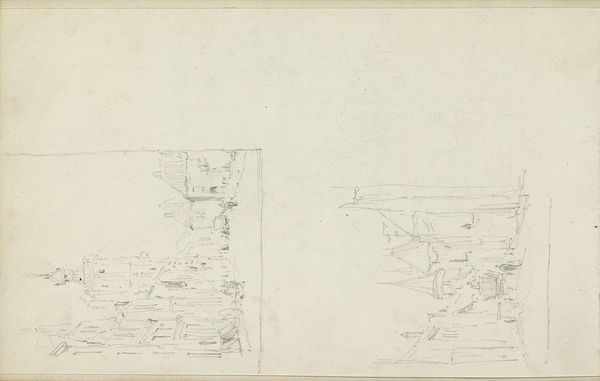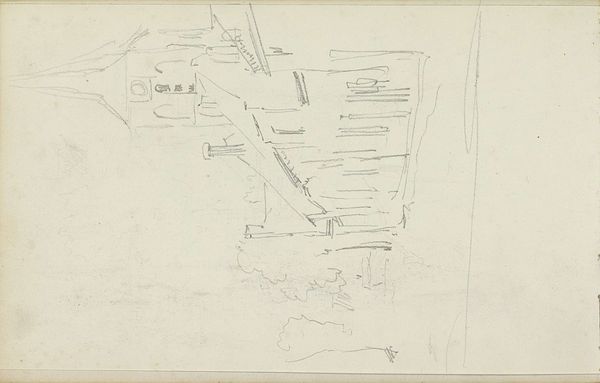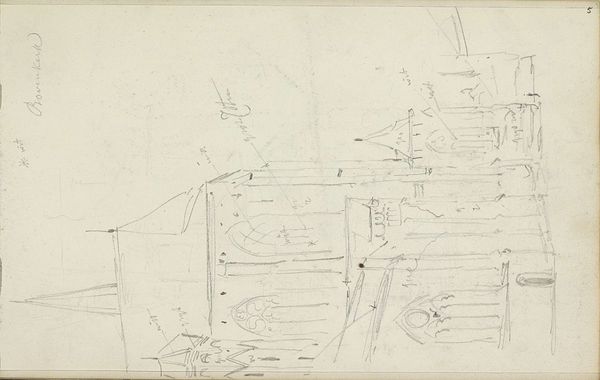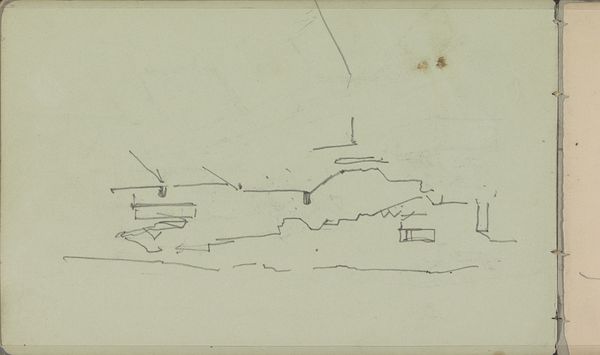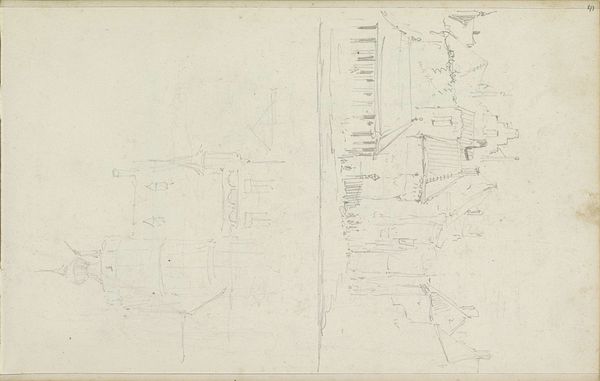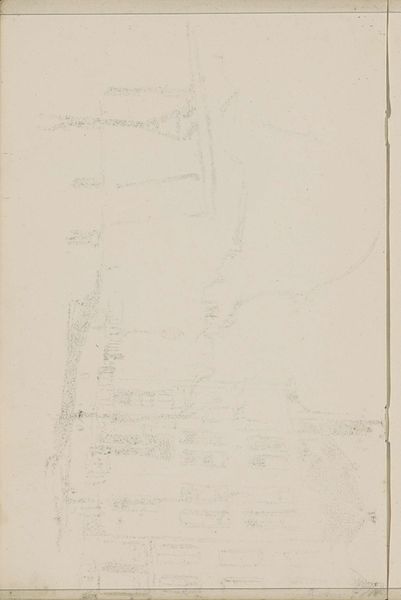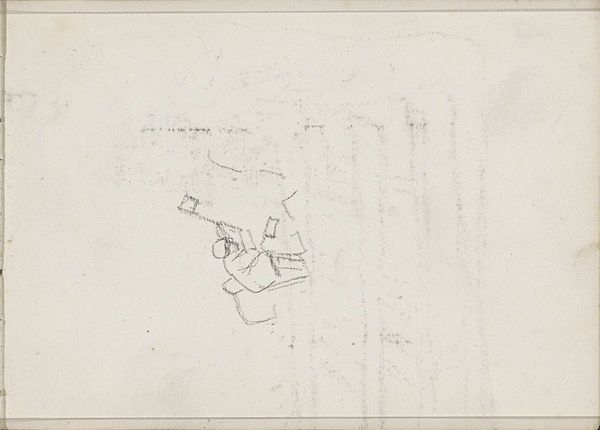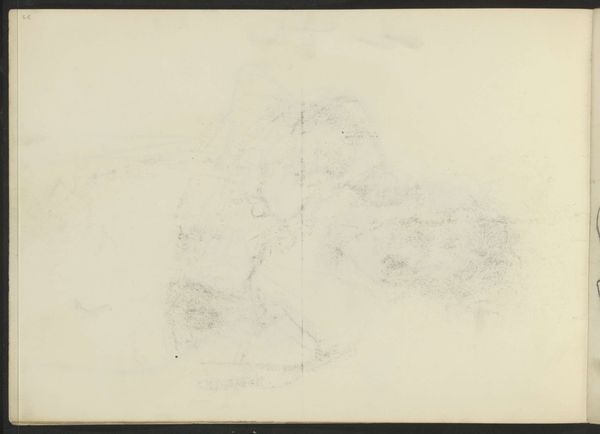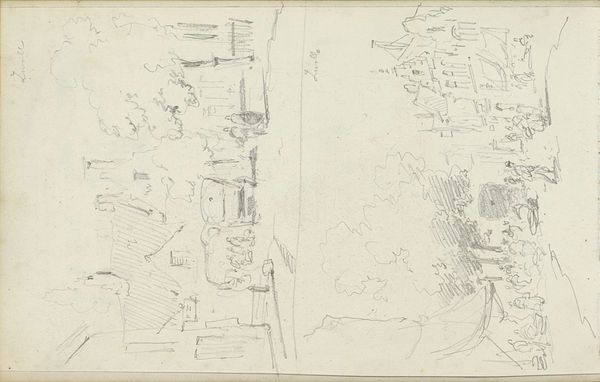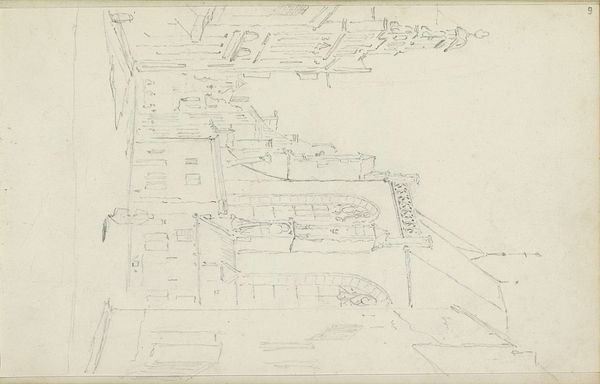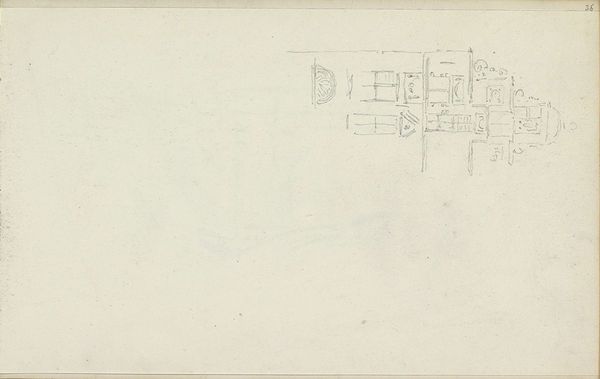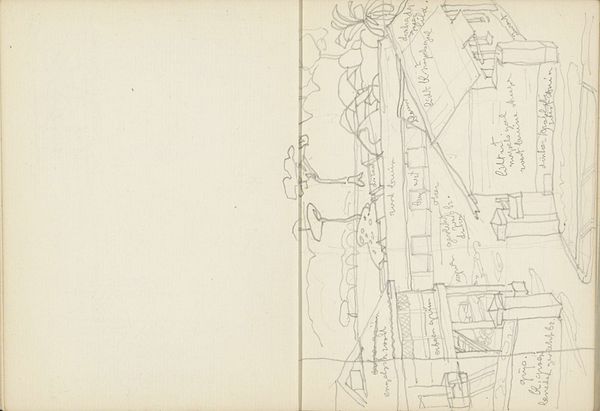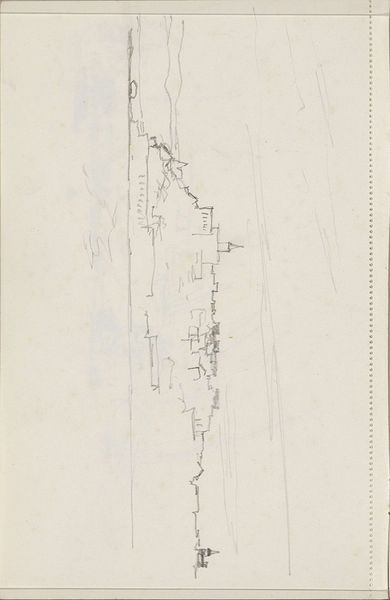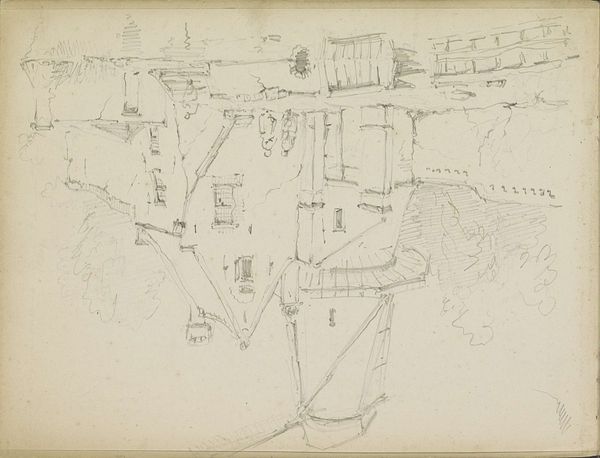
#
amateur sketch
#
aged paper
#
toned paper
#
incomplete sketchy
#
hand drawn type
#
personal sketchbook
#
idea generation sketch
#
ink drawing experimentation
#
sketchbook drawing
#
sketchbook art
Copyright: Rijks Museum: Open Domain
Editor: This sketch, titled "Gezicht op twee gebouwen," or "View of Two Buildings," is by Adrianus Eversen and likely dates to sometime between 1828 and 1897. It's an ink drawing on paper and has a very preliminary feel to it, like a quick impression captured in a notebook. What strikes me is how faint and ephemeral it appears. What do you see in this piece? Curator: This seemingly simple sketch holds a potent sense of cultural memory. Notice how the buildings, though sparsely rendered, evoke a certain Dutch architectural vernacular. The artist isn't just depicting buildings, but distilling an essence of place and time. The quick, almost frantic lines suggest the artist was trying to capture a feeling as much as a physical likeness. Editor: That’s a really interesting point about capturing a feeling. It makes me wonder, what feeling or idea was Eversen trying to capture here? Is it just about architecture? Curator: I suspect it's deeper than just architecture. Consider how architectural styles reflect societal values and power structures. These buildings, in their barest form, may symbolize a specific era in Dutch history, its mercantile successes and its urban identities. Perhaps he was hinting at the solidity and endurance of these structures as symbols of collective identity. Even the type of paper – aged and toned – carries a weight of history, connecting us to the past through material memory. What about the unfinished quality - what is carried there? Editor: Perhaps the incomplete nature of the drawing reflects an ambiguity, an openness to interpretation of what this place, and maybe this moment in time, represented? Curator: Precisely! The sketch invites us to participate in the process of meaning-making. We, the viewers, become active agents in constructing the narrative of these buildings, and, by extension, our understanding of the past. Editor: So, it’s less about the precise details of the buildings and more about what they represent as symbols and how we engage with them across time. That's really changed how I see this little sketch! Curator: Indeed. Eversen gives us not just a view of buildings, but a glimpse into the enduring power of symbols and how they shape our sense of place and history.
Comments
No comments
Be the first to comment and join the conversation on the ultimate creative platform.
